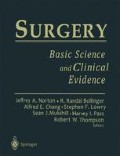Abstract
Life arose on earth about 3.5 billion years ago from the spontaneous assembly of small organic molecules. Over millions of years, these simple molecules acquired the ability to interact and ultimately developed mechanisms of self-replication. These mechanisms became more elaborate as evolutionary forces brought their influence to bear. The first true “cells” arose when DNA, RNA, and proteins, became contained within a boundary, the plasma membrane. These first unicellular organisms acquired the ability to interact with one another. Multicellularity endowed these early organisms with the ability to organize into ever more complicated structures, ultimately giving rise to the explosion in biodiversity we see today. Cells, proteins, and genes are so interconnected that it would be impossible to consider only one level of organization. Thus, we begin our chapter with a discussion of the evolution of cell structure. We then consider the structure-function relationships between nucleic acids and proteins. We next describe cellular processes fundamental to cell survival, including gene regulation and cell proliferation. We also explore the process of cell death. We end our chapter by discussing multicellularity and cell communication.
Access this chapter
Tax calculation will be finalised at checkout
Purchases are for personal use only
Preview
Unable to display preview. Download preview PDF.
References
Alberts B, Bray D, Lewis J, Raff F, Roberts K, Watson JD. Molecular Biology of the Cell. New York: Garland, 1994.
Kleinsmith LJ, Kish VM. Principles of Cell Biology. New York: Harper Collins, 1988.
Watson JD, Hopkins NH, Roberts JW, Steitz JA, Weiner AM. Molecular Biology of the Gene. Menlo Park: Benjamin/Cummings, 1987.
Latchman DS. Basic Molecular and Cell Biology. London: Chapman & Hall, 1997.
Lodish H, Baltimore D, Berk A, Zipursky S, Matsudaira P, Darnell J. Molecular Cell Biology. New York: Freeman, 1995.
Ross MH, Reith EJ. Histology: A Text and Atlas. New York: Lippincott, 1985.
Fuchs E, Cleveland D. A structural scaffolding of intermediate filaments in health and disease. Science 1998; 279: 514–519.
Drewes G, Ebneth A, Mandelkow EM. MAPs, MARKs, and microtubule dynamics. Trends Biochem Sci 1998; 23: 307–311.
Hirokawa N. Kinesin and dynein superfamily of proteins and the mechanism of organelle transport. Science 1998; 279: 519–526.
Beckerle MC. Spatial control of actin filament assembly: lessons from Listeria. Cell 1998; 95: 741–748.
Hall A. Rho GTPases and the actin cytoskeleton. Science 1998; 279: 509–514.
Aktories K. Rho proteins: targets for bacterial toxins. Trends Microbiol 1997; 5: 282–288.
Latchman DS. Gene Regulation: A Eucaryotic Perspective. London: Chapman & Hall, 1995.
Bauerle PA, Baltimore D. NF-KB: ten years after. Cell 1996; 87: 13–20.
Evan G, Littlewood T. A matter of life and cell death. Science 1998; 281: 1317–1321.
Cryns V, Yuan J. Proteases to die for. Genes Dev 1998; 12: 1551 1570.
Nunez G, Benedict MA, Hu Y, Inohara N. Caspases: the proteases of the apoptotic pathway. Oncogene 1998; 17: 3237–3245.
Raff M. Cell suicide for beginners. Nature (Lond) 1998; 396: 119122.
Thornberry NA, Lazebnik Y. Caspases: enemies within. Science 1998; 281: 1312–1316.
Baker SJ, Reddy EP. Modulation of life and death by the TNF receptor superfamily. Oncogene 1998; 17: 3261–3270.
Mathias S, Pena LA, Kolesnick RN. Signal transduction of stress via ceramide. Biochem J 1998; 335: 465–480.
Balda MS, Matter K. Tight junctions. J Cell Sci 1998; 111: 541–547.
Stone DK. Receptors: structure and function. Am J Med 1998; 105: 244–250.
Hakonarson H, Grunstein M. Regulation of second messengers associated with airway smooth muscle contraction and relaxation. Am J Respir Crit Care Med 1998; 158: S115 - S122.
Weiss A, Schlessinger J. Switching receptors on or off by receptor dimerization. Cell 1998; 94: 277–280.
Robinson MJ, Cobb MH. Mitogen-activated protein kinase pathways. Curr Opin Cell Biol 1997; 9: 180–186.
Toker A, Cantley L. Signaling through the lipid products of phosphoinositide-3-OH kinase. Nature (Lund) 1997; 387: 673–677.
Liu KD, Gaff en SL, Goldsmith MA. JAK/STAT signaling by cytokine receptors. Curr Opin Immunol 1998; 10: 271–278.
Hata A, Massague J, Shi Y. TGF-/3 signalling and cancer: structural and functional consequences of mutations in Smads. Mol Med Today 1998; 4: 257–262.
Gilbert SF. Developmental Biology. Sunderland: Sinauer, 1994.
Hynes RO. Integrins: versatility, modulation and signaling in cell adhesion. Cell 1992; 69: 11–19.
Clarke EA, Brugge JS. Integrins and signal transduction pathways: the road taken. Science 1995; 268: 233–239.
Juliano R, Haskill S. Signal transduction from the extracellular matrix. J Cell Biol 1993; 120: 577–585.
Parsons JT. Integrin-mediated signaling: regulation by protein tyrosine kinases and small GTP-binding proteins. Curr Opin Cell Biol 1996; 8: 146–152.
Giancotti FG. Integrin signaling: specificity and control of cell survival and cell cycle progression. Curr Opin Cell Biol 1997; 9: 691–700.
Mathews, Van Holde. Biochemistry. New York: Benjamin/Cummings, 1990.
Editor information
Editors and Affiliations
Rights and permissions
Copyright information
© 2001 Springer Science+Business Media New York
About this chapter
Cite this chapter
Corbett, S.A., Foty, R.A. (2001). Normal Cell Structure and Function. In: Norton, J.A., et al. Surgery. Springer, Berlin, Heidelberg. https://doi.org/10.1007/978-3-642-57282-1_2
Download citation
DOI: https://doi.org/10.1007/978-3-642-57282-1_2
Publisher Name: Springer, Berlin, Heidelberg
Print ISBN: 978-3-642-63239-6
Online ISBN: 978-3-642-57282-1
eBook Packages: Springer Book Archive

